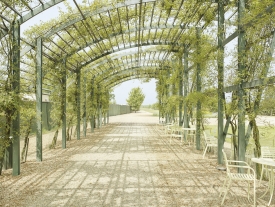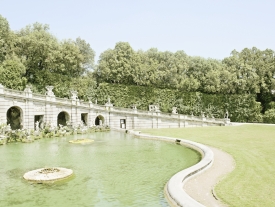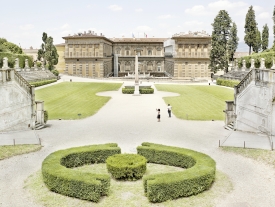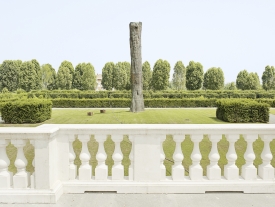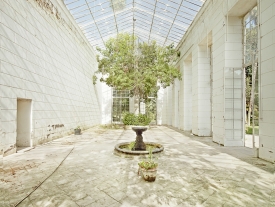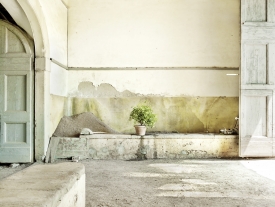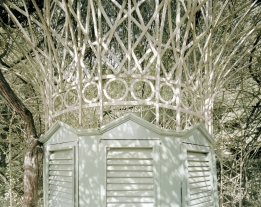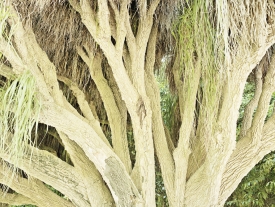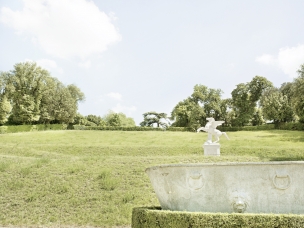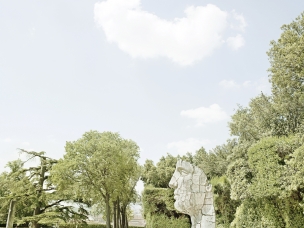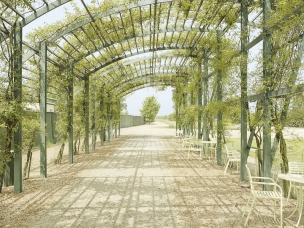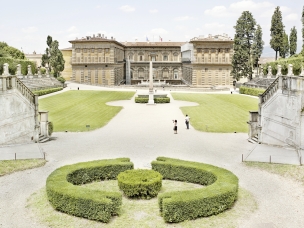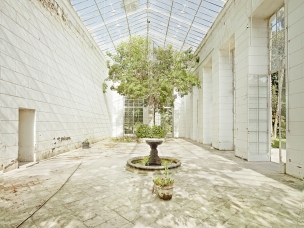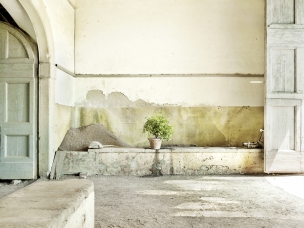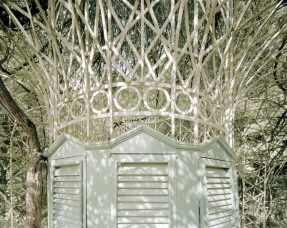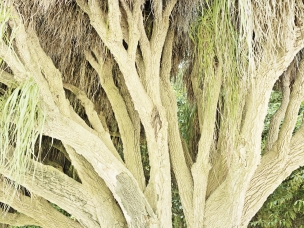The Green Hour, 2010
The cracked profile of a face stands out, white, dazzling on a tree fence. Green, dense, shady. We are in Florence, in the Boboli Garden, one of the best examples of Italian gardens in the world and considered the best preserved in the country. Its architectural and panoramic structure as well as the collection of sculptures it houses make it a veritable open-air museum.
We leave Florence for a trip that will allow us to discover the natural and architectural beauty of the parks that have won or reached the final stage of the competition “I parchi più belli d’Italia” (“the most beautiful parks in Italy”), sponsored by the FAI (Fondo per l’Ambiante Italiano).
Turin is home to the Venaria Reale, one of the most significant examples of the splendour of 17th and 18th century architecture and art in Europe.
In Genoa, the splendid garden of Villa Durazzo Pallavicini, which with its romantic park is considered one of the largest historical gardens in Italy.
In Tuscany, the splendid gardens of the Villa Medicea di Castello, located in the hilly area of Florence, today site of the Accademia della Crusca.
In Lombardy, the extraordinary atmosphere of the baroque garden of Isola Bella. Built at different times and divided into ten sloping terraces, it is decorated with swimming pools, fountains, architectural perspectives which open on the bottom of the waters of Lake Maggiore.
The Villa D’Este in Tivoli, a UNESCO World Heritage Site, with its impressive concentration of fountains, water lilies, caves, water games and hydraulic organ is a model imitated many times in the European gardens of Mannerism and Baroque.
And then the Reggia di Caserta, also a UNESCO World Heritage Site, with its park of Italian and English gardens, the largest garden in Europe with an area of over 2.5 km (the largest garden in Europe with a length of 2.5 km?).
Last stop on our journey through these Italian green wonders with another archaeological and landscape jewel, which has recovered its splendour after decades of abandonment thanks to the intervention of the FAI: the Garden of Kolymbetra, in the Valley of the Templi in Agrigento (“Valley of the Temples”). An extraordinary place by the magnificence of nature and the richness of archaeological discoveries that are still revealed today.



